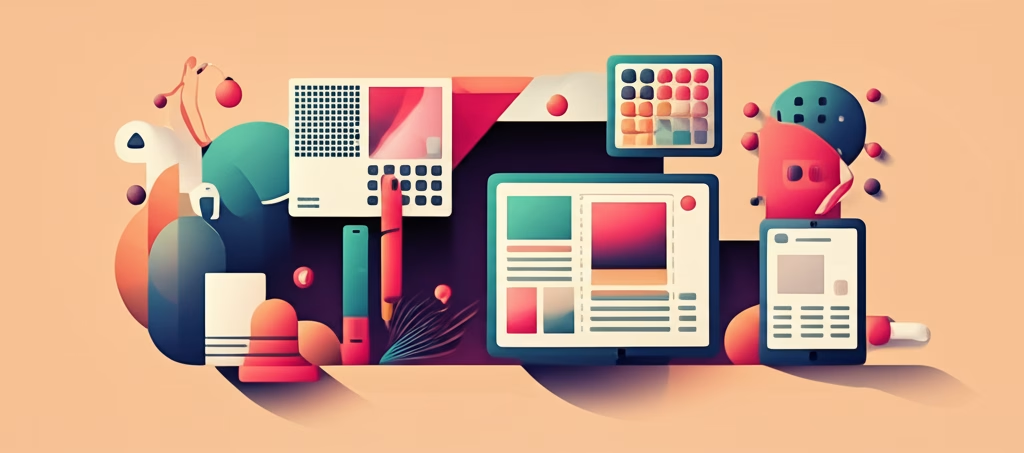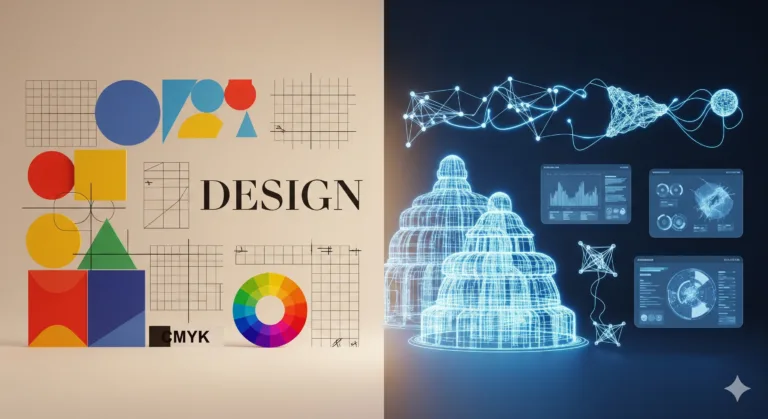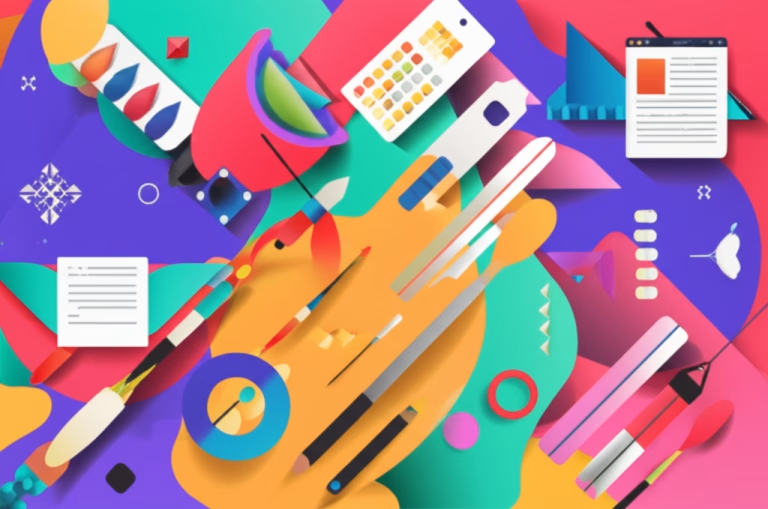Starting Your Design Journey with the Right Guides
Feeling overwhelmed by all the online tutorials and courses when you’re just starting out in design? It’s like trying to drink from a firehose! Finding a clear path can be tough for a beginner. That’s where reliable resources come in. Books offer a structured way to grasp foundational concepts at your own pace. This article will help you understand why printed resources are still invaluable, what types of books can help, common pitfalls to avoid, and how to effectively use them to build your design skills.
Table of Contents
What Are “Books to Learn Design”?
When we talk about books to learn design, we mean published works specifically created to teach you the principles, techniques, and history of visual communication. These aren’t just coffee table books with pretty pictures (though inspiration is important!). They are structured educational tools written by experienced designers, educators, or experts in specific fields like typography, color theory, or layout.
Unlike fragmented online articles or videos, these volumes typically offer a comprehensive deep dive into a subject. They build knowledge step-by-step, often including exercises or examples to help you understand complex ideas. Think of them as your personal mentors, available whenever you need them, guiding you through the fundamentals of the creative field.
They cover everything from the very basics, like what makes a good composition, to more advanced topics or specific software guides. For any aspiring designer, building a small library of these publications is a wise investment in their education and future career in the arts.
Why Are Design Books Still Important for Beginners?
In a digital age overflowing with free content, you might wonder why pick up a physical book or even an e-book version of one. The truth is, publications offer a structured, often more rigorous, approach to learning than hopping between websites. They provide a curated curriculum, ensuring you don’t miss crucial foundational knowledge.
These texts often delve deeper into the ‘why’ behind design rules, not just the ‘how’. Understanding the history and theory gives you a stronger base than simply following tutorials. Plus, reading from a book can reduce distractions compared to browsing online, allowing for more focused study. They are reliable references you can return to again and again as you grow.
Furthermore, many classic and essential design concepts were first articulated and explored thoroughly in book format. They represent accumulated wisdom passed down through generations of creative professionals. For any newcomer serious about mastering the craft, these volumes are indispensable tools for acquiring knowledge.
Essential Concepts Found in Design Literature
Design publications cover a vast array of topics crucial for any visual artist. Starting with the fundamentals is key. You’ll find volumes dedicated entirely to the basic building blocks that underpin all visual work. Grasping these is essential before moving onto more specific areas.
Foundational Principles: These volumes introduce you to core concepts like balance, contrast, hierarchy, alignment, proximity, and repetition. Understanding these principles helps you create visually appealing and effective layouts. They explain how to arrange elements on a page or screen so they make sense and guide the viewer’s eye. Mastering these basics is the first step.
Color Theory: Books on color explain how colors interact, their psychological effects, and how to create harmonious palettes. You’ll learn about hue, saturation, value, and different color schemes like complementary or analogous. Understanding color helps you evoke the right mood and make your designs impactful. It’s a surprisingly deep subject with practical applications.
Typography: This is the art of arranging type. Publications on typography teach you about different font classifications (serif, sans-serif, script), how to pair fonts effectively, line height (leading), letter spacing (kerning), and paragraph alignment. Good typography makes text readable and adds personality to your work. It’s often called the backbone of graphic arts.
Layout and Composition: These books focus on arranging all the elements – text, images, shapes – on a page or screen. They cover grid systems, white space (negative space), visual flow, and creating focal points. Learning good layout ensures your designs are organized, easy to navigate, and aesthetically pleasing. It’s about creating structure.
Specific Software Guides: While not strictly theoretical, books on software like Adobe Photoshop, Illustrator, or InDesign are invaluable practical guides. They provide step-by-step instructions and explain tools and features thoroughly. Using these alongside theoretical books helps you put principles into practice. They bridge the gap between theory and execution.
Inspiration and History: Some books showcase great design work from the past and present. These are less about instruction and more about exposure to different styles, movements, and successful projects. Seeing examples of excellent work can spark your own creativity and help you develop your aesthetic sense. Understanding history provides context.
The Business of Design: As you progress, you might explore volumes covering freelance practices, pricing, client communication, and legal aspects. While perhaps not for the absolute beginner, these are vital for anyone considering a professional path in the creative industry. They cover the practicalities beyond just making things look good.
Building a diverse collection covering these areas provides a well-rounded education. Start with the fundamentals and gradually explore more specialized topics as your interests and skills develop. Each type of publication offers unique value on your learning path.
Common Mistakes When Using Design Books and How to Avoid Them
While books are fantastic resources, beginners can sometimes fall into traps that limit their effectiveness. Being aware of these pitfalls can help you get the most out of your reading materials.
- Reading without Practicing:
How to Avoid: Don’t just passively read. Treat the book like a textbook. Actively follow along with examples, do the exercises if provided, or create your own small projects applying the concepts immediately after reading a chapter. Practice reinforces learning. - Buying Too Many Books at Once:
How to Avoid: It’s exciting to build a library, but focusing on one or two fundamental volumes at a time is more effective. Master the content of one before moving to the next. This prevents feeling overwhelmed and ensures you actually absorb the information. - Not Starting with Fundamentals:
How to Avoid: It’s tempting to jump straight to books on complex software or trendy styles. However, skipping the basics (like color, type, and layout) will create gaps in your understanding. Start with publications that cover the core principles first. Build a strong foundation. - Treating Books as the ONLY Resource:
How to Avoid: While invaluable, books are best used in conjunction with other learning methods. Supplement your reading with online tutorials, courses, practice projects, and seeking feedback from others. Combine theoretical knowledge with practical application and real-world experience. - Not Re-reading or Referencing:
How to Avoid: Design publications, especially those on principles, are excellent reference tools. Don’t just read them once and put them away. Revisit sections as needed when working on projects or when you encounter challenges. They contain wisdom you’ll appreciate more as you gain experience.
How to Effectively Apply Design Book Knowledge to Your Projects
Reading is just the first step. The real learning happens when you put that knowledge into action. Here’s how to integrate what you learn from your design volumes into your actual creative work.
- Choose a Project Based on What You’re Reading: If you just finished a chapter on color harmony, create a small project (like a simple poster or social media graphic) where the primary goal is to apply the specific color principles you learned. Don’t try to apply everything at once.
- Deconstruct Existing Designs Using Book Concepts: Look at websites, magazines, packaging, or advertisements. Analyze them through the lens of what your book taught you. Identify the grid system, the font pairings, the color choices, and how hierarchy is established. This sharpens your eye and understanding.
- Keep a Sketchbook or Digital File for Notes and Exercises: As you read, jot down key takeaways, sketch out layout ideas based on principles, or recreate examples from the book. This active engagement helps solidify the concepts in your mind and provides a personal reference guide.
- Redesign Something Applying New Rules: Take an old project or find a poorly designed example (like a flyer from a local shop) and try redesigning it specifically applying the principles you’ve learned about layout, typography, or color. Focus on making it better using your new knowledge.
- Don’t Be Afraid to Experiment and Break Rules (Once You Understand Them): Design is also about creativity and pushing boundaries. Once you grasp the fundamental rules taught in your books, you’ll know when and how you can strategically bend or break them to create unique and impactful work. Knowledge provides the foundation for innovation.
Frequently Asked Questions (FAQ) about Books for Learning Design
Q: Which book should a complete beginner start with?
A: Look for books specifically titled “Fundamentals of Design,” “Design Principles,” or similar. Publications that cover basic elements like line, shape, color, and core principles like contrast and balance are ideal starting points.
Q: Are e-books as good as physical books for learning?
A: Both formats have pros. E-books are portable and searchable. Physical books can be easier for layout study and less distracting. Choose the format you find easiest to focus on and reference. The content is usually the same.
Q: How many design books do I need?
A: You don’t need dozens to start. A few core texts covering fundamentals, typography, and color will provide a solid base. Build your collection gradually based on your interests and the specific skills you want to develop next. Focus on quality over quantity.
Q: Can I learn design only from books?
A: While books provide crucial theoretical knowledge, practical application is essential. You need to combine reading with hands-on practice, working on projects, and ideally getting feedback to truly learn and improve your skills. Books are a powerful part of a multi-faceted learning approach.
Your Foundation for Creativity
Embarking on your design education journey with the right reading materials can set you on a path to success. These volumes offer structured knowledge, deep dives into essential concepts, and a reliable reference you can revisit throughout your career. They provide the ‘why’ behind the ‘how’, giving you a solid foundation that online resources alone often miss.
By choosing wisely, reading actively, and most importantly, applying what you learn to practical projects, you’ll find that these publications become invaluable tools in developing your skills and understanding of the creative arts. Don’t just collect them; use them as springboards for your own creative exploration. Start building your knowledge today!
Continue your studies by reading our article on Understanding Color Psychology in Design!



